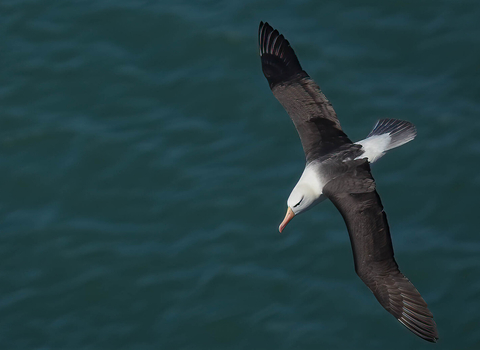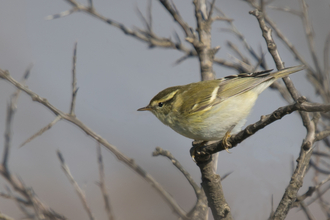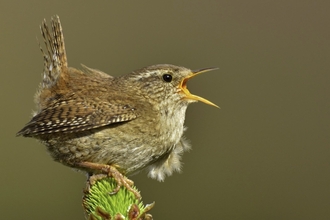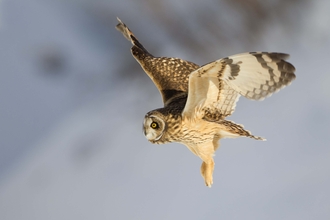Every year, birdwatchers get excited as unexpected species appear in the UK.
Did you know that more than 600 species of wild bird have been recorded in the UK? More than half of these birds are rare visitors, individuals that have gotten lost on their migration and ended up far from their usual home. They come from all possible directions – America, Asia, the Arctic, North Africa and beyond. Some get lost in bad weather, others just take a wrong turn.
Many birdwatchers get very excited when these rare birds turn up, with some rushing across the country to see them. When a golden-winged warbler from North America appeared in a supermarket car park in 1989, over 3,000 people went to see it in just one day! But how do these birds get so lost?
From the west
Most rare visitors from North America are carried across the Atlantic by powerful autumn storms. They are usually migrant birds, which are leaving Canada or northern USA and heading south for the winter. These birds are aiming for the Caribbean, Central America, or even South America. Sometimes, as they fly along
the coast, they get caught up in storms and drift farther out to sea. If the winds are strong enough, some are pushed all the way to Britain and Ireland.

Red-eyed vireo © Canadian-Nature-Visions
Red-eyed vireos breed in North America and winter in the Amazon. Storms sometimes bring them to the UK.
From the east
A lot of the rare birds that reach the UK come from the east, with some of the rarest coming from the far side of Asia! We’re still not quite sure what sends these birds so far off course, but unlike American birds the wind is probably not solely to blame. This is because they don’t have to fly across a huge ocean to get here. If a storm pushed an Asian bird off course, it could land and wait for better weather. The most likely explanation is that the birds just make a mistake. Birds use all kinds of tricks to follow their migration route, but just like us they can go wrong and end up lost. Of course, if the wind is blowing in the right direction it increases the chances of them getting here!
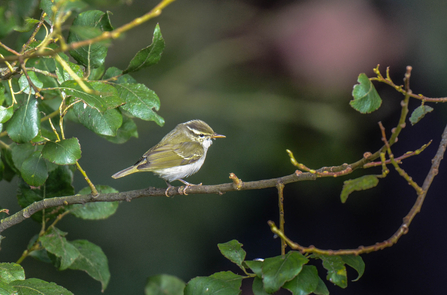
Eastern crowned warbler © Pete Richman
Eastern crowned warblers nest in China, Korea, Japan and the far east of Russia, spending the winter in South East Asia. They've been found in the UK four times, all in October.
Familiar faces
Sometimes our rare visitors come back for several years in a row, with many even returning to the exact same place. One of the most famous returning rarities was a female lesser crested tern nicknamed Elsie. Lesser crested terns are usually found in tropical seas, but in 1984 Elsie appeared on the Farne Islands in Northumberland. She left after a week or so, but came back every summer until 1997 and even raised young with one of the local Sandwich terns! More recently, a black-browed albatross from the South Atlantic has visited Yorkshire’s Bempton Cliffs for several summers in a row.
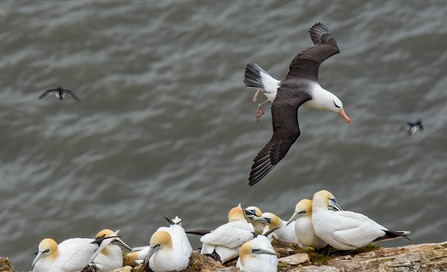
Black-browed albatross © Pete Richman
This black-browed albatross spent a few summers hanging out with gannets at Bempton Cliffs.
Out of the blue
Even though we get lots of unusual birds turning up in the UK, every now and then something appears that nobody would ever have expected. It could be a bird that doesn’t usually fly far from its home, so is less likely to get lost on migration. Or it could be one that lives so far away we can only guess at how it got here! One famous example involved an ancient murrelet – a tiny seabird that’s related to our puffins and guillemots. Ancient murrelets live in the Pacific Ocean, thousands of miles from here. So it was a huge surprise in 1990 when one was spotted from Lundy Island, off the coast of Devon!
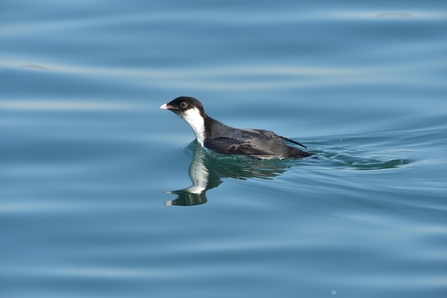
Ancient murrelet © Takashi Yanagisawa
Ancient murrelets are usually found in the northern Pacific Ocean.

